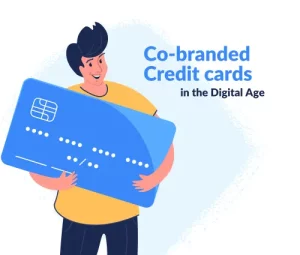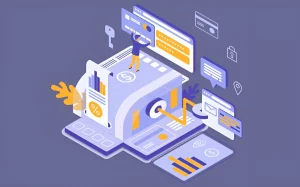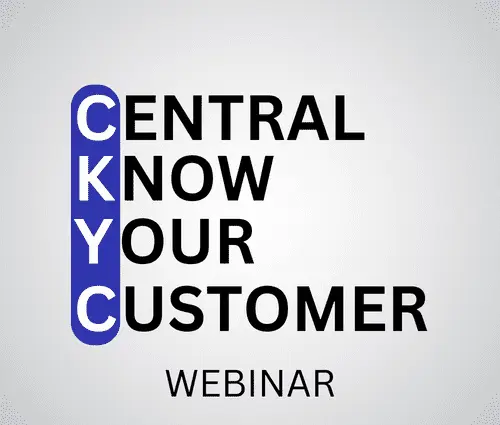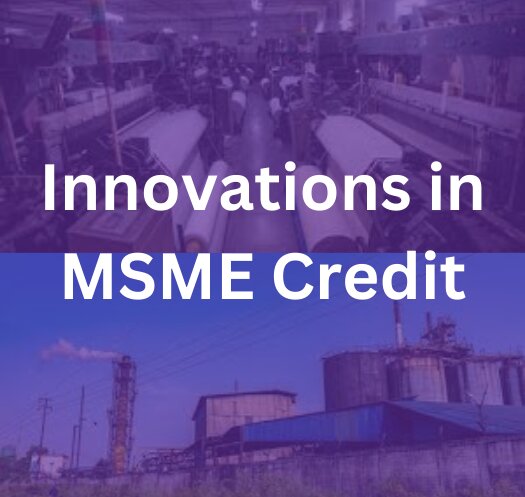Past Webinars
Come and be a part of our exclusive series of live knowledge sharing sessions, where renowned industry experts will lead insightful discussions on the cutting-edge skills and technologies that are revolutionizing the fintech and banking sectors.


The Role of OCEN in Digital Lending: Simplifying MSME Financing
Join us on October 2nd at 4 PM for an insightful webinar where we will explore how the Open Credit Enablement Network (OCEN) is transforming the digital lending landscape for Micro, Small, and Medium Enterprises (MSMEs).
Learn how OCEN is streamlining access to credit, simplifying the financing process, and enabling seamless integration between lenders, technology providers, and MSMEs
Year-End Compliances for NBFCs
Join us for an insightful webinar on “Year-End Compliances for NBFCs,” where we delve into the crucial aspects of compliance that Non-Banking Financial Companies need to navigate as we approach the end of the fiscal year 2023-24.
This webinar is tailored for professionals and stakeholders in the NBFC sector who are committed to ensuring adherence to regulatory requirements, staying abreast of the latest updates, and mitigating potential risks.
Co-Branded Credit Cards in the Digital Age
Join us for our upcoming webinar on the topic “Co-Branded Credit Cards in the Digital Age” on Feb 20th 2024 at 5 PM. This webinar is designed exclusively for banking professionals eager to explore the transformative potential of co-branded credit cards within the rapidly evolving digital landscape.
This session will delve into the strategic integration of co-branded credit cards, shedding light on how banks can leverage innovation to stay ahead in the competitive digital banking era.
Demystifying Embedded Finance
Join us on 22nd Jan 2024 at 5 PM for an insightful webinar on “Demystifying Embedded Finance.” This webinar is designed to empower financial institutions with the knowledge to make the most of Embedded Finance.
This session aims to break down the intricacies of embedded finance, offering a comprehensive understanding of its impact on the lending landscape.
Year-End Compliances for NBFCs
Join us for an insightful webinar on “Year-End Compliances for NBFCs,” where we delve into the crucial aspects of compliance that Non-Banking Financial Companies need to navigate as we approach the end of the fiscal year 2023-24.
This webinar is tailored for professionals and stakeholders in the NBFC sector who are committed to ensuring adherence to regulatory requirements, staying abreast of the latest updates, and mitigating potential risks.
Quickly Launch a New Credit Product in this Upcoming New Year
The festive season holds the key to a significant portion of a Financial Institution’s annual revenue, with 40% of income being generated during this vibrant period. It’s an opportunity that you cannot afford to miss.
In our upcoming webinar, “Quickly Launch a New Credit Product in this Upcoming New Year,” on Nov 21 2023 @ 4 PM.
Importance of CKYC in Financial Institutions
In an era where regulatory compliance and customer data protection are paramount, understanding the significance of CKYC in financial institutions has never been more critical.
Join us for an insightful webinar on 8th August 2023 at 4 PM as we delve into the core of secure and credible financial operations with a focus on Central Know Your Customer (CKYC).
Enhancing Customer Experience in Urban Cooperative Banks
During this webinar, esteemed industry influencers & experts will share valuable insights showcasing how UCBs can distinguish themselves by elevating their customer experience. Whether you are a bank executive, manager, or professional working in the cooperative banking sector, this event is specifically tailored to provide you with valuable knowledge and inspiration to drive positive transformation.
Innovations in MSME Credit
MSMEs (Micro, Small and Medium Enterprises) play a crucial role in the growth and development of the Indian economy. And for financial institutions to provide them with credit is essential for any MSME’s success. Over the years, there have been several innovations in MSME credit, such as digital lending platforms, invoice financing, P2P lending, credit scoring models, etc.
Co-Lending by Banks & NBFCs
Co-lending generally entails financial institutions working together to provide borrowers with loan products and services. The co-lending strategy developed by the Reserve Bank of India has promoted risk sharing and made it easier for banks and non-bank lenders to work together. The recent RBI guidelines have also impacted the co-lending model in the Indian financial Ecosystem. Although the concept appears attractive in theory, it faces significant organisational, operational and technical issues.
- Email: salesteam@cloudbankin.com
- Sales Enquiries: +91 9080996606
- HR Enquiries: +91 9080996576









After smartphone penetration, people are not watching their SMS at all. They use SMS only for OTP related transactions. That’s it.
But What can a Lender see in your SMS after you consent to them?
Lender can see income, expenses, and any other Fixed Obligation like (EMIs/Credit Card).
1) Income – Parameters like Average Salary Credited, Stable Monthly inflows like Rent
2) Expenses – Average monthly debit card transactions, UPI Transactions, Monthly ATM Withdrawal Amount etc
3) Fixed Obligations – Loan payments have been made for the past few months, Credit card transactions.
It also tells the Lender the adverse incidents like
1) Missed Loan payments
2) Cheque bounces
3) Missed Bill Payments like EB, LPG gas bills.
4) POS transaction declines due to insufficient funds.
A massive chunk of data is available in our SMS (more than 700 data points), which helps Lender to make a credit decision.
#lendtech #fintech #manispeaksmoney